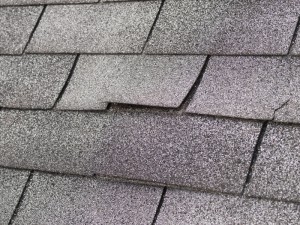Thankfully here in the Northeast, it was a relatively mild winter followed unfortunately by a somewhat surprisingly cold and damp early spring. Now that the weather has improved, it’s the right time to perform an inspection of your roof before you get wrapped up in gardening, golf or other more favored warm weather activities.
If you haven’t inspected your roof in a while and aren’t quite sure what to look for, it also might be a good time to bring in a professional roofer. But if you feel pretty confident up on a ladder and understand some of the telltale signs of trouble, here are a few tips to move you along.
Broad brush overview – Your initial inspection should provide an overview of your entire roof. Does anything stand out? Do you see any loose tiles, curled shingles or detached flashing. Things like this, often easily repaired, are essential to weather upcoming spring and summer storms. Left unchecked, flashing gaps and damaged or missing roof tiles and shingles can lead to water incursion and serious consequences.
 Cracked, bruised or blistered shingles – Ice dams, freezing temperatures or the weight of snow and ice can damage roofing shingles. The surface of asphalt shingles and certain ceramic tile are particularly susceptible to cracking, bruising and blistering from the weight and temperatures associated with snow and ice which then opens the door to additional, more deleterious damage. During winters with stronger storms, you may have lost whole shingles from your roof. If you find this sort of damage, you’ll want to address it as soon as possible to maintain the integrity of your shingle roof.
Cracked, bruised or blistered shingles – Ice dams, freezing temperatures or the weight of snow and ice can damage roofing shingles. The surface of asphalt shingles and certain ceramic tile are particularly susceptible to cracking, bruising and blistering from the weight and temperatures associated with snow and ice which then opens the door to additional, more deleterious damage. During winters with stronger storms, you may have lost whole shingles from your roof. If you find this sort of damage, you’ll want to address it as soon as possible to maintain the integrity of your shingle roof.
Moss or lichen accumulation – If moss or lichen is present on your roof, have it swept off or apply a moss-removal chemical, such as equal parts bleach and water, and sweep it off after it has been killed. While moss and lichen themselves are harmless – they put off no toxic spores or fumes – they function as a big sponge and can keep your roof damp longer than it should be.
Clogged, blocked or broken gutters – the byproducts of winter weather – tree debris – can inhibit the ability of your gutters to properly divert rain water. Now is a good time to clear twigs, leaves and branches from your gutters so there is no danger of clogging during heavy spring or summer rains. Consider clearing the gutters and downspouts completely with a hose or pressure washer but before doing so, inspect the debris for roofing granules to determine whether excessive wear has taken place. If so, these roof tiles may need to be replaced.
Water spots on your ceilings – the last part of your inspection should be conducted inside, looking at the ceilings in all the rooms of your building. If you’ve noticed water spots on your ceiling, it could be from a roof leak. In addition, heavy snow loads on roofs may also be responsible for cracks in your home’s ceilings and walls.
Lastly, and most importantly, is that if you decide to perform your own inspection, remember that step number one is safety. Climbing onto a roof can be dangerous, and walking on your roof has the potential to make any existing problem even worse. If you’re going to climb on your roof, be sure the roof is completely dry. Wear shoes with good traction, and make sure someone else is home. A milder day is best, because you are more likely to damage your shingle roofing on a hot day.
If you decide that a professional roof inspection is something you need, we provide this service free of charge. We’ll provide a thorough inspection, evaluating any winter damage and recommend maintenance steps. What’s more, our experience with varied roofing types and styles assures you we can provide the right solution whatever your residential roofing needs! Contact us today if you need some roof inspection assistance.
